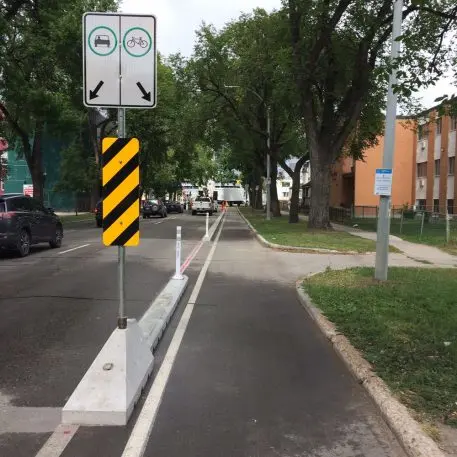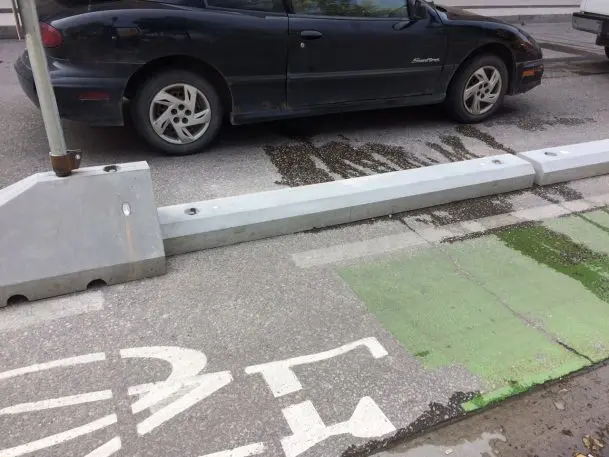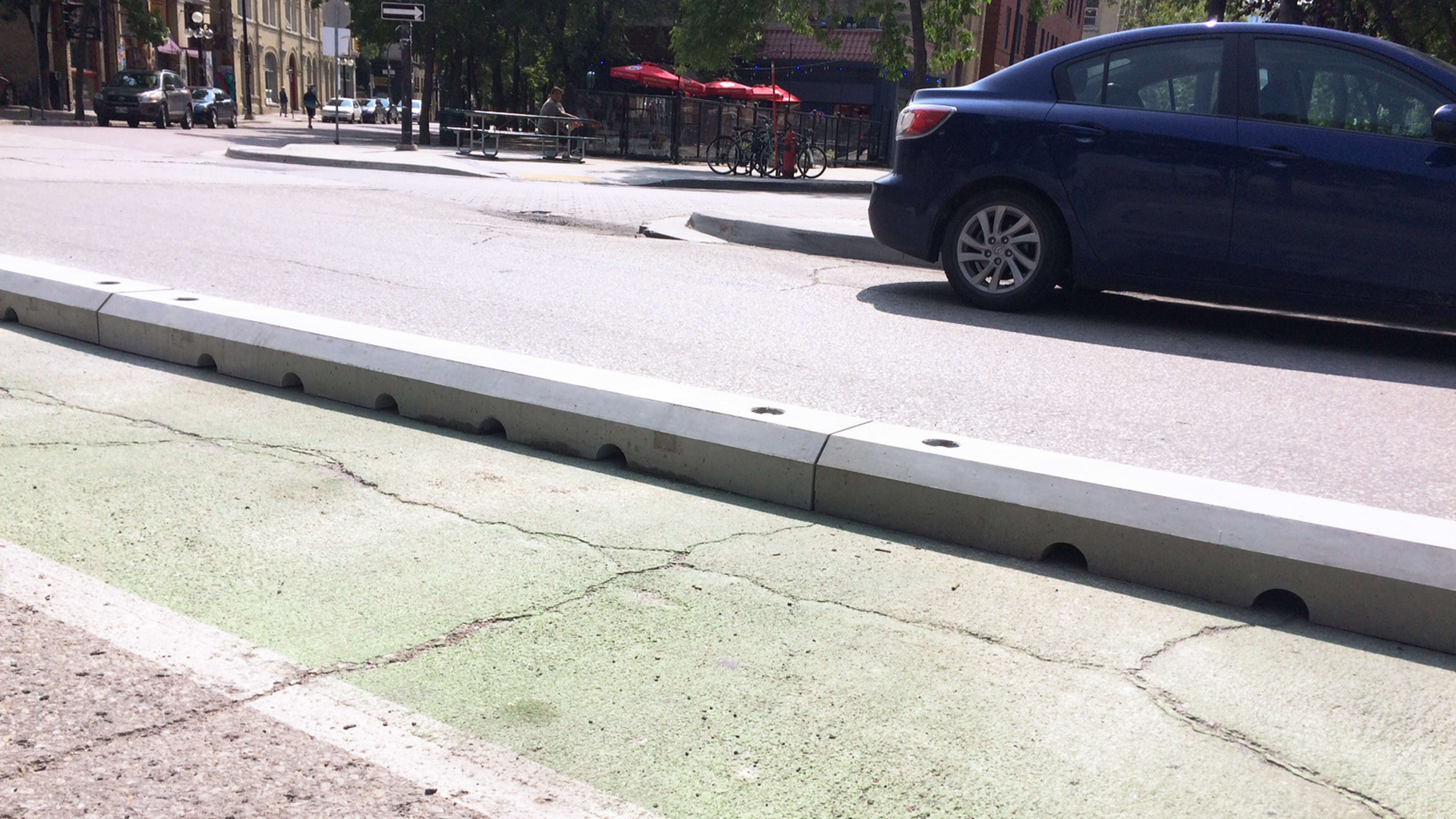A new protected bike lane in downtown Winnipeg, Canada, looks permanent. But the concrete barriers that line the path are actually adjustable, and after watching how traffic moves and getting feedback from residents, the city can move the lane.
Like some other movable barriers–like planters that separate bike lanes in other cities–the concrete curbs are a cheap and simple way for a city to test out a new bike path. “The idea of putting something temporary on the ground so that you see how it works is really powerful,” says Martha Roskowski, vice president of local innovation for People for Bikes, a U.S. bike advocacy organization. “It’s really smart, because then the engineers and designers can go out and look at it, and if it’s not working operationally–like if cars can’t make the turn, or people are confused–they can tweak it. They can adjust them.” The city also plans to study how the lanes work with snow removal vehicles in the winter.

“Usually, the city just comes out and says, ‘Here’s the designs of what we want to do,’ everybody argues about it, and then they put it out there,” says Roskowski. “Places like Memphis, Tennessee, and other cities have actually used it as part of the process. To say, ‘Okay, we’re going to put it on the ground for six months. We’ll tweak it, we’ll see how it works.’ . . . Actually having people see it often ameliorates some of the concerns about it.”
In Winnipeg, where cycling has grown over the last decade (with a slight dip in 2016) despite winter temperatures that are sometimes as cold as Mars, city officials think that drivers may recognize the benefits of separated bike lanes after they see them in use. “It may be easier for cars to navigate when there’s a separated, protected space for cyclists,” says Stephanie Whitehouse, active transportation coordinator for the city of Winnipeg. “I think it’s a win-win, ultimately, if we do provide more protective facilities.”

If Winnipeg had installed typical permanent lanes, Whitehouse says, they would have performed a complete road renewal that could cost millions. The adjustable lane barriers, which city engineers designed based on similar barriers used in other Canadian cities, cost $15,000 to install on two city streets. A 100-meter stretch took only three hours to install.
The current pilot will last nine months as the city collects feedback, and then similar lanes could be installed around the city. (Though the lanes are moveable, they’re also designed to be durable enough to stay in place if they’re working well.)
“They have potential wherever we are looking into protected facilities,” says Whitehouse. “We can consider them as a quicker, possibly more cost-effective way to roll out infrastructure.”
Recognize your brand’s excellence by applying to this year’s Brands That Matter Awards before the early-rate deadline, May 3.
